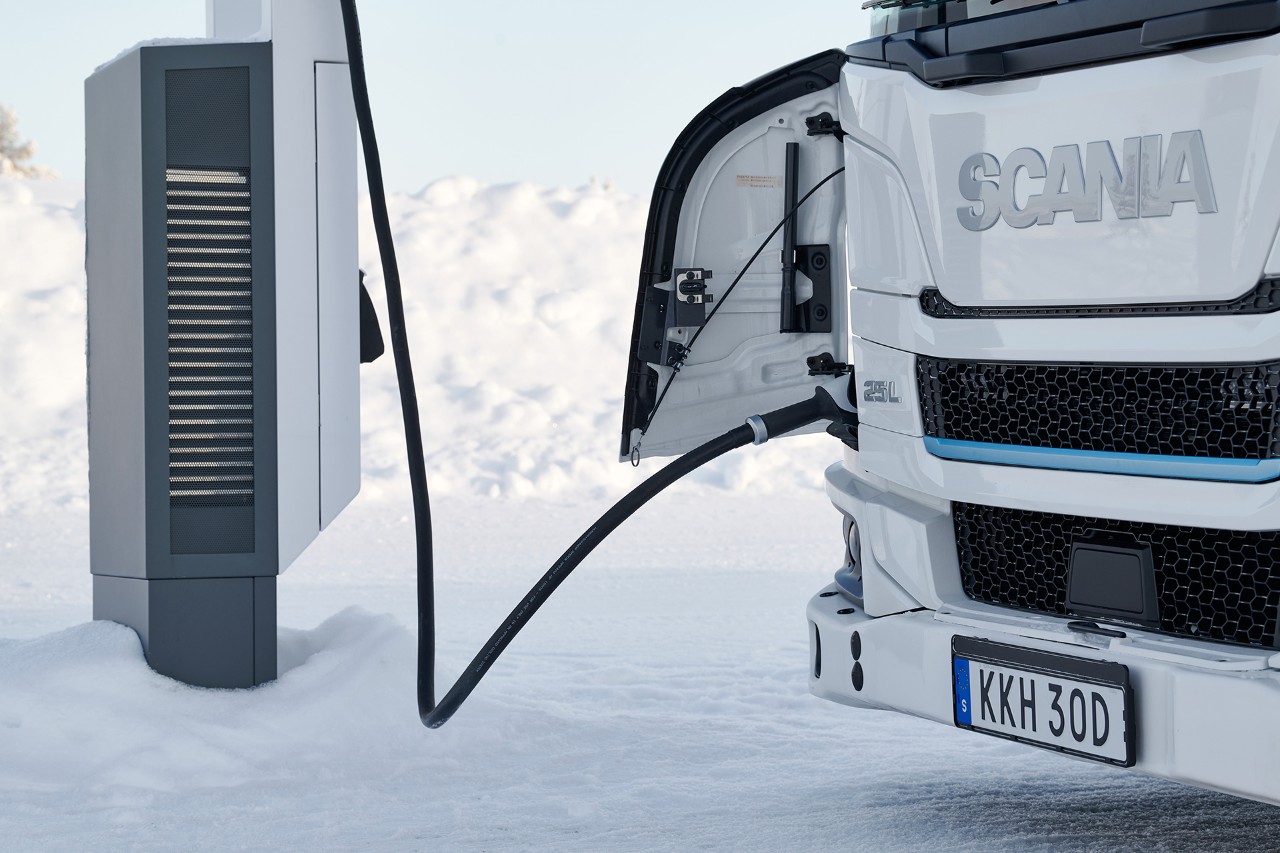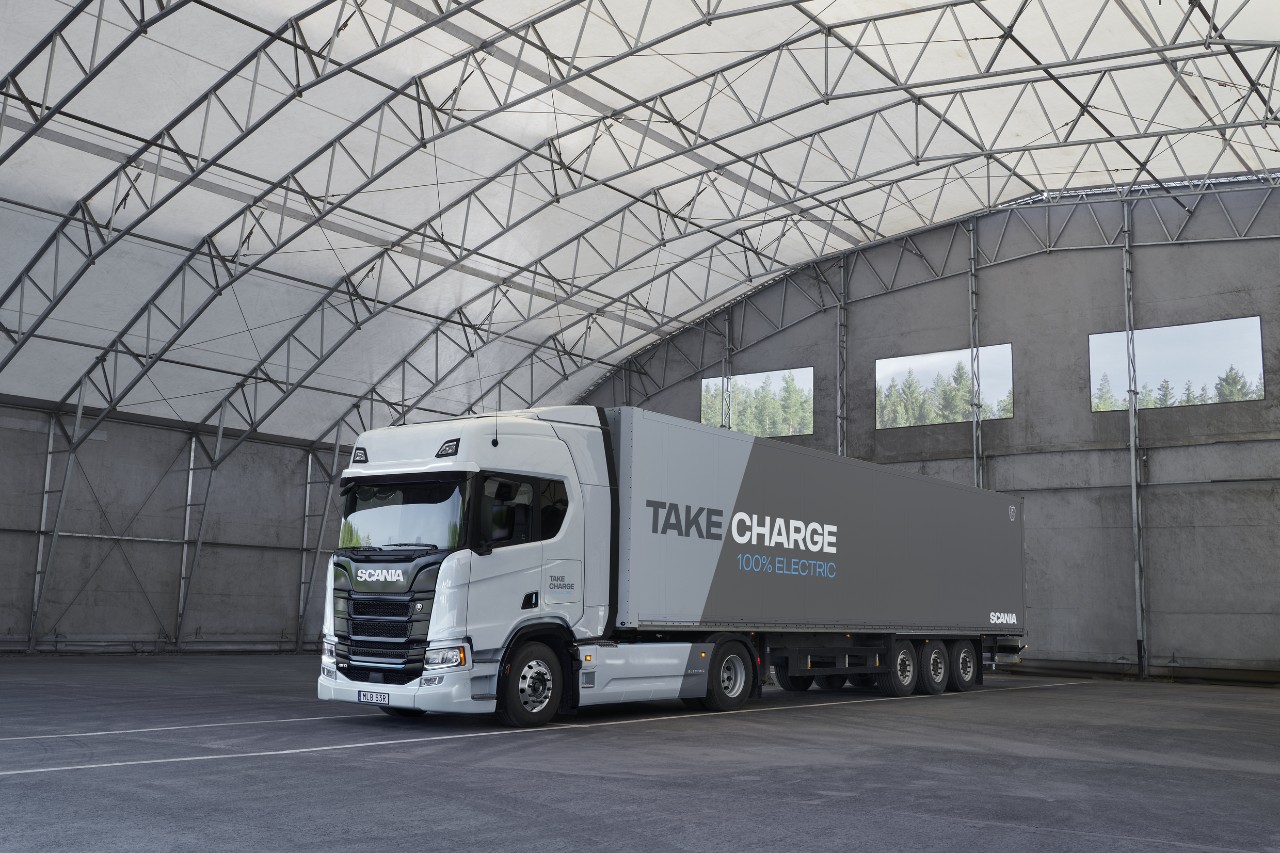
Why it’s time to get started on your transport electrification journey
By: Kristoffer Nyberg, Head of e-Truck Solution Management at Scania
Transport electrification offers a practical, efficient and readily available solution with a vital role to play in the decarbonisation of transport. For transporters in regions with access to electrification, taking that next step can bring real competitive advantages.
The electrification of transport is no longer a distant dream – it’s a practical solution that’s already available in some regions worldwide.
Energy efficiency, sustainability, better tech, better business
The goal of sustainable transport is to eliminate waste, which is also one of Scania’s core values, and in terms of energy transfer from source to wheel, electricity, especially from green sources, offers the most efficient pathway. No other propulsion system today can match the total system efficiency of electric vehicles when green electricity is used. Electric drivetrains are simply more energy-efficient than diesel-powered alternatives.
What’s more, an increasing number of cities and regions are limiting diesel vehicles’ access and incentivising the adoption of electric vehicles. Transport companies’ own customers have growing sustainability requirements too, and, for businesses conscious of their environmental impact, electric transport offers significant leverage: while transport might account for only 5 to 10 percent of operational costs, it can represent 50 percent of CO₂ emissions of the goods sold. Transitioning to electric is a fairly straightforward and powerful action for companies seeking to meet sustainability targets and achieve decarbonisation.
Also, the technology has come a long way. Battery-electric vehicles (BEVs) are now suitable for many applications. From their initial use in distribution and urban transport, electric trucks are now present in construction, timber transport, and deliveries of temperature-controlled goods, thanks to greater battery power, faster charging and improved charging infrastructure. Range and payload anxieties are receding all the time, while depot charging at central locations during downtime can be as little as one third of diesel costs. Total cost of operation is continuing to decrease.
Acknowledging the challenges
Of course, the road to full electrification has obstacles, beyond the fact that some areas of Europe and many other parts of the world don’t even have the infrastructure yet to support electrification.
Depot charging is affordable, but public charging costs can still be high (substantially higher than the current lowest cost of €0.30 to 0.35 per kWh and even that is still on the high side for a strong business case). That complicates achieving a positive total cost of operation for fleets reliant on public infrastructure. Rapid scaling of cost-effective, reliable charging options is essential.
Electric transport often demands changes to logistics planning, too. For maximum efficiency, companies may need to adapt their operations – difficult for businesses where transport is a support function rather than a core activity. Companies need software, planning tools and operational flexibility, and will often have to collaborate with others on charging.
It’s also true that incentives and support measures differ widely between countries, creating an uneven playing field for operators working across borders. Harmonisation of regulations would greatly accelerate adoption, something for which we at Scania have been calling for.
Transport operators often operate at very thin margins, making it hard to absorb the costs of transition alone. We need a collective effort across the entire transport value chain – from shippers to receivers – to ensure sustainability goals are not sacrificed to short-term competition.
Supporting companies’ electrification journeys
Change is never easy but momentum for electrification is building. As is the support for transporters willing to take the next step.
At Scania, we’ve long recognised the industry’s challenges. Rather than wait for others to act, we’ve created solutions to help our customers make a smooth transition.
Whether it’s Erinion (a company to support the adoption of electric trucks by installing charging points at customer locations across Europe), Scania Charging Access (our public charging solution for trucks), Juna (our innovative pay-per-use model), or our ability to tailor advice, solutions and financing packages to companies’ particular needs, we’ve put the support structure in place.
Despite clear challenges – infrastructure, costs, and operational adaptations – the fundamental benefits of efficiency, sustainability and emerging economic gains make electrification the most scalable solution for achieving decarbonisation.
It’s also true that those adopting BEVs now will gain competitive advantages. It will be easier than expected once you begin and Scania can help. The challenges are real but manageable; companies need to get started now to reap early benfits and to be prepared for the future.
It’s time to go from piloting to scaling!
About the author
Kristoffer Nyberg is Head of e-Truck Solution Management at Scania, where he leads the company’s work to make electrified transport practical, scalable and profitable. With more than two decades of experience across sales, marketing, product development and strategy, he combines deep industry knowledge with a strong belief in collaboration and clarity as drivers of progress. His focus is on turning the shift towards sustainable transport into real business value for Scania’s customers.
Read more

Charging
We help you find the right charging solution for your specific need.
